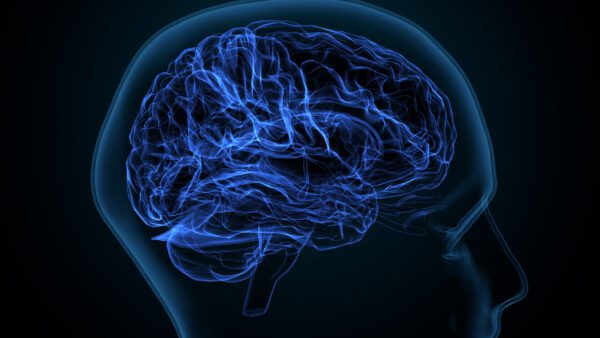

TMS therapy—a safe, non-invasive treatment method with no lasting side effects—has been approved by the FDA as a depression treatment since 2008, delivering hope to millions of people who have struggled to treat their depression. TMS has also been investigated over the past two decades as a treatment method for anxiety disorders, and was recently approved by the FDA for treating patients with severe OCD.
Though TMS is a powerful treatment method for depression and anxiety, it may sound “too good to be true.” Just how effective is TMS therapy? How successful is TMS at treating depression and other mental conditions, and how long does it take to see positive results?
Read on to have all of your questions answered about the effectiveness of TMS therapy as a treatment for depression, anxiety, and OCD.
Does TMS heal your brain?
Depression and anxiety disorders are typically traced to chemical imbalances in your brain. TMS therapy for major depression and anxiety works by directing short electromagnetic pulses into your brain, much like an MRI machine, to correct these imbalances. TMS targets the left prefrontal cortex—the part of your brain associated with mood regulation—and stimulates your brain cells to produce chemicals that improve depression and anxiety.
While there is no permanent cure for depression and anxiety, TMS therapy heals your brain by encouraging neuroplasticity: your brain’s capability to adapt and reorganize itself. Neuroplasticity is how your brain changes in order to learn new things or adapt to new environments and situations and encouraging neuroplasticity through magnetic stimulation encourages your brain to rewire itself.
Research suggests that depression and anxiety themselves are “maladaptive” examples of neuroplasticity, and by encouraging positive plasticity through TMS, you are basically helping your brain to make healthy behaviors and positive emotions easier to experience and training your brain to better regulate your emotions.
What is the success rate for TMS?
Most TMS providers find that the success rate for TMS therapy ranges from 70 to 80 percent—in other words, between seven in ten and four in five find significant relief from their depression or anxiety symptoms after treatment.
On average, three out of four TMS patients with major depression experience powerful positive effects from TMS, and of those patients, about half experience a complete remission of their symptoms for up to a year after just one course of treatment!
There are different methods for TMS with their own success rates. Some TMS protocols achieve positive results for more people on average than others. At TMS Central Florida, we utilize NeuroStar TMS therapy, as we consider it the most effective form of treatment with an 83% response rate for proven depression relief.
How long do TMS results last?
There are not yet any permanent cures for conditions such as depression and anxiety disorders. Like many other treatments for these conditions, TMS is not a permanent fix. However, TMS provides long-lasting relief from depression and anxiety symptoms when other treatments such as psychotherapy, including cognitive behavioral therapy and mindfulness meditation, and medication such as SSRIs and SNRIs prove ineffective.
TMS results can last up to a little over a year. After a course of TMS therapy lasting from four to six weeks, the average TMS patient sees long-term reduction in the severity of their depression or anxiety symptoms or complete remission for six to twelve months.
How many sessions of TMS are needed for positive results?
Encouraging positive neuroplasticity doesn’t happen overnight. One course of TMS therapy typically takes about four to six weeks of daily TMS sessions for patients to see long-term positive results.
A single TMS session lasts about nineteen or twenty minutes. At a TMS clinic, you sit in a comfortable treatment chair, supervised by a licensed licensed psychiatrist, while you receive treatment. TMS therapy is generally painless, with some patients reporting little more than a mild headache, jaw pain, or prickling or tingling sensations.
TMS is an outpatient procedure, which means you attend a clinic to receive treatment without needing to spend any time in a hospital overnight or for a short or long term, and after a session is complete you can walk out and immediately resume your day-to-day activities with no short-term impairment, since there is no need for anesthetic and no systemic side effects.
Due to the use of magnetic fields in TMS, some people worry about the effects of prolonged exposure. However, while TMS therapy involves magnetic pulses of a similar strength to what you might experience in an MRI machine, the pulses are extremely brief and the total magnetic exposure over the course of a round of TMS therapy is less than the exposure from one MRI scan.
What happens if TMS doesn’t work?
As the statistics show, TMS therapy has a high success rate, especially for major depression. For comparison, while TMS therapy can have a 70-80% success rate for depression, the success rate of antidepressants is only around 40-60% on average.
There is no treatment or medication that works 100% of the time for 100% of patients, and TMS therapy is no exception. Depression and anxiety conditions, their symptoms, and the severity of their symptoms differ from person to person, as do the efficacy of different treatment options. Not everybody who undergoes TMS will see improvement after their first TMS course.
For many people, TMS is a last resort after other treatment options have yielded little or no positive results, but that doesn’t mean all hope is lost if TMS doesn’t work. Depression and anxiety treatment is a trial-and-error process. If one course of TMS therapy doesn’t work, you may benefit from a second course, often in new combinations with different treatment methods.
For example, if TMS therapy on its own doesn’t work, you could still see positive results by combining TMS with:
- Antidepressants or anti-anxiety medication
- Talk therapy or other forms of psychotherapy
- A lifestyle change, such as a diet or exercise regimen
- A change in supplemental treatment, such as an adjusted prescription or a different therapist
To treat major depression when TMS fails, you can explore alternatives to TMS therapy such as ketamine treatment or electroconvulsive therapy.
TMS Success Stories
As one of the top providers of TMS therapy in the state and the only TMS provider in Brandon, Florida, we at TMS Central Florida see dozens of TMS success stories on a regular basis.
TMS patients at our clinic have found their experiences with NeuroStar TMS therapy to be life-changing and even live-saving. We have patients who have struggled with severe or treatment-resistant depression for years and now feel like completely new people with a new lease on life.
Patients at TMS Central Florida can attest to the hard work we put into making sure they receive the best standard of care, with a laser-focus on their mental health and overall well-being. Our personable and attentive staff and physicians work hard to make TMS therapy a comfortable experience from the patient’s chair to the billing department, with flexible scheduling to make your treatment a part of your daily routine alongside work, education, or family.
“The staff worked really hard to get my treatments approved by my Insurance. They were able to accommodate me by having appointments available after work. It has made a huge difference in my life!” – Lisa C.
“I would like to thank Dr. DeVine for his professionalism and dedication to my mental health and overall well-being. He did not give up on me, He promised he help me, and make me better. He saved my life.” – Sherri M.
“By the end of the TMS treatment, things were better than I could have imagined. After that sixth week, I was so excited that my life was starting to resume.” – Garret A.
See more TMS Success Stories and testimonials
Interested in exploring TMS therapy? Schedule a consultation at 813-423-7037 or contact us online:

